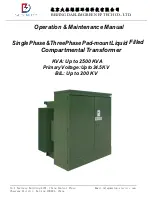
TIMTER™ Multi-mode Digital Telemetry Transmitter
12
Quasonix, Inc.
Figure 3: CCSDS 131.0-B-1 Rendering of Basic Convolutional Encoder Diagram
1.3.17 Clock-free Baseband Interface Option
– CF
Clock-free is an optional mode that transmits user data, but uses an internal bit sync to take the place of the normal
external clock. The standard TIMTER requires external clock and data inputs. With the CF option, no external clock
is required. The clock is generated directly from the data and a user-specified bit rate.
Because the internal bit sync’s clock takes the place of the normal external clock in clock-free mode, the selected
clock source must be external for clock-free just like it is for normal clock/data. This mode is most often used to
retrofit older analog transmitters in TM systems where the crypto device does not deliver a clock to the transmitter.
The commanded clock-free rate can be saved with the SV command, and if so, it will be restored at power-on. When
the CF option is used, the bit rate range is as defined in Table 12 for all waveform modes. It is limited by the bit rate
achievable for the current mode. (Refer also to the HR and LR options for extended bit rates, the ID option for
Internal Clock and Data, and Table 11 for a snapshot of bit rate information.)
Do not confuse the
CF option
with CS/DS
commands
.
Internal clock (CS 1 Command) is used when the transmitter is to be a test source only. The unit transmits the
selected internal data pattern (DS 1 command) at the bit rate set by the user via the IC command. The internal clock
is not used to transmit actual payload data.
External clock (CS 0 Command) is the normal mode: the user supplies clock and data, or in clock-free mode, the
user only supplies valid data. Refer to Table 13 for user commands.
















































